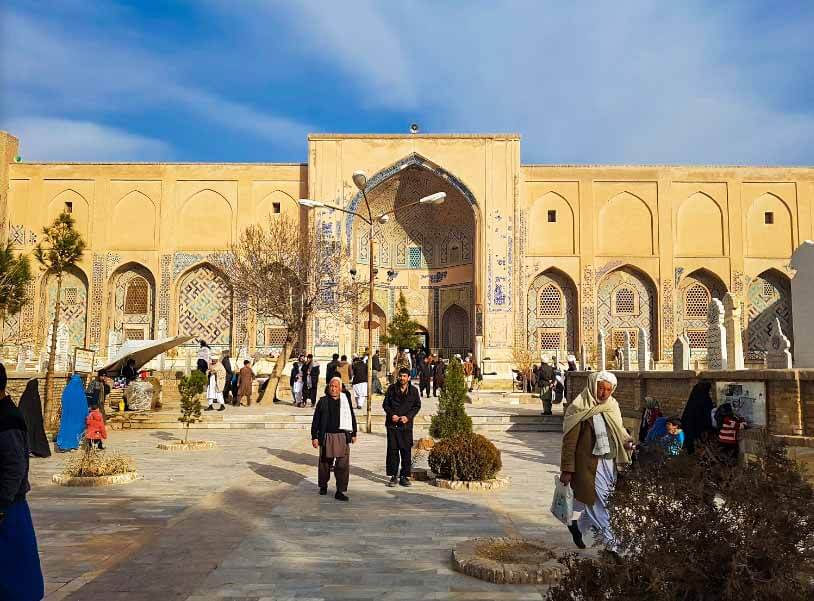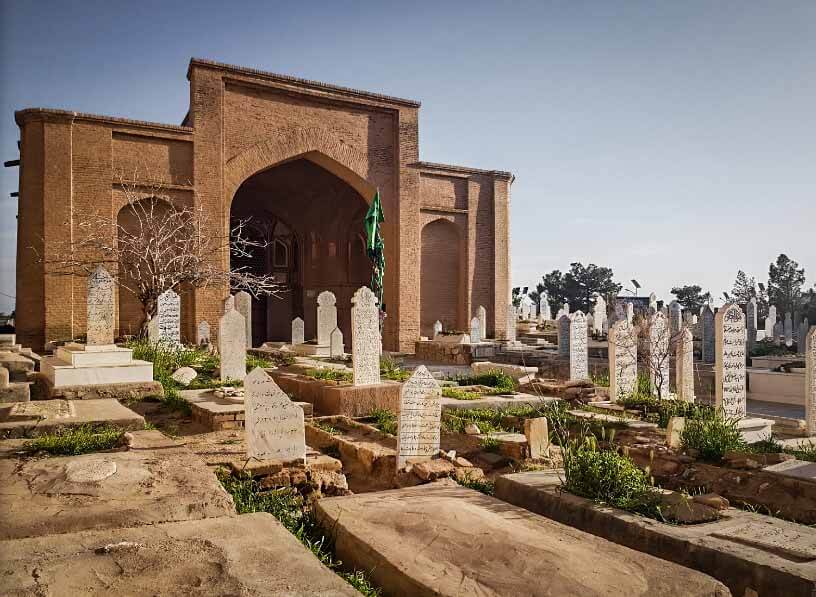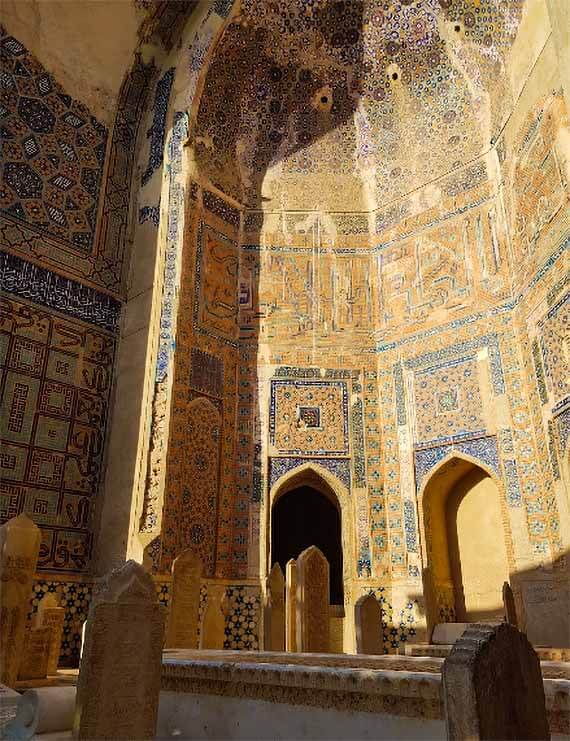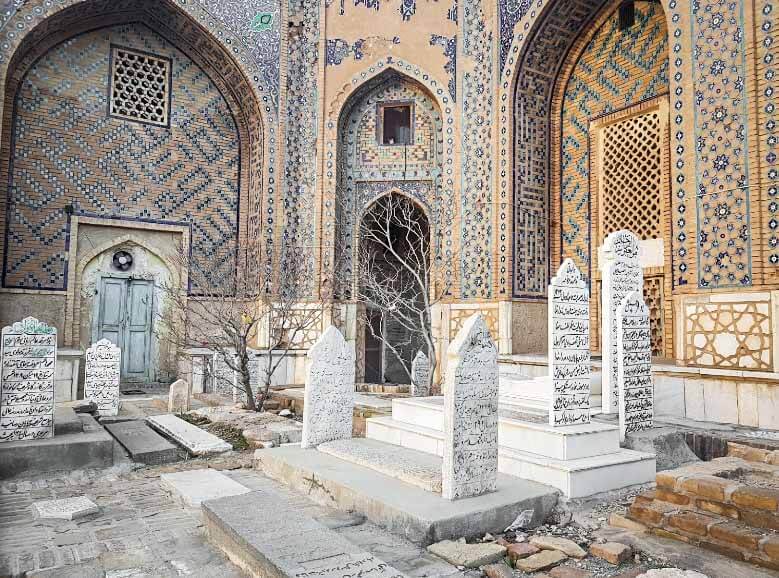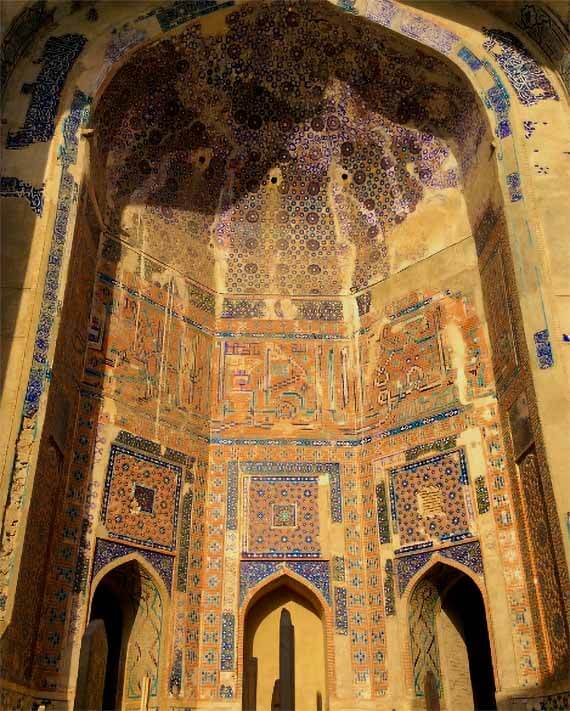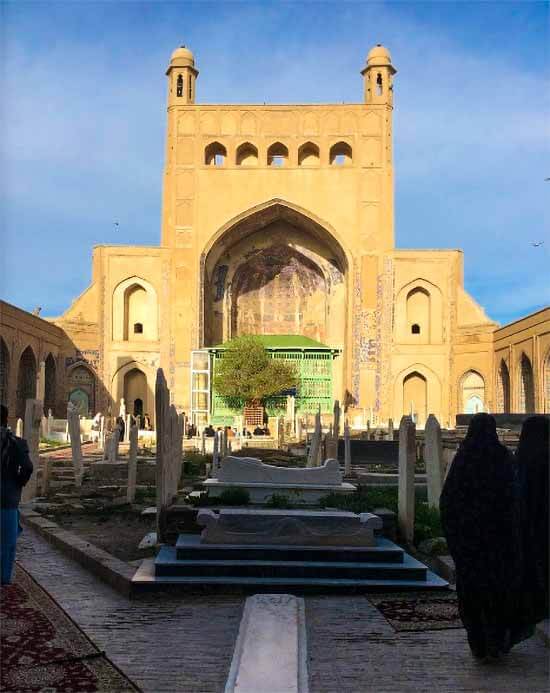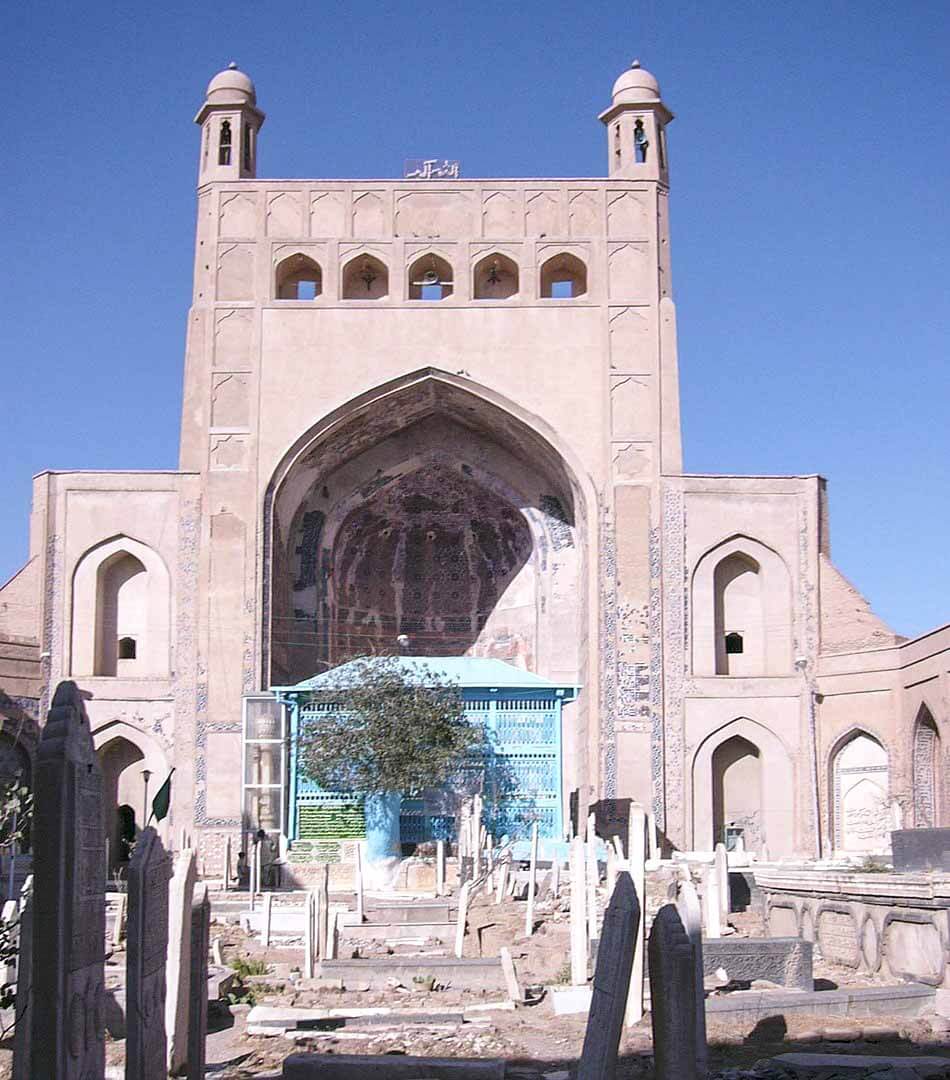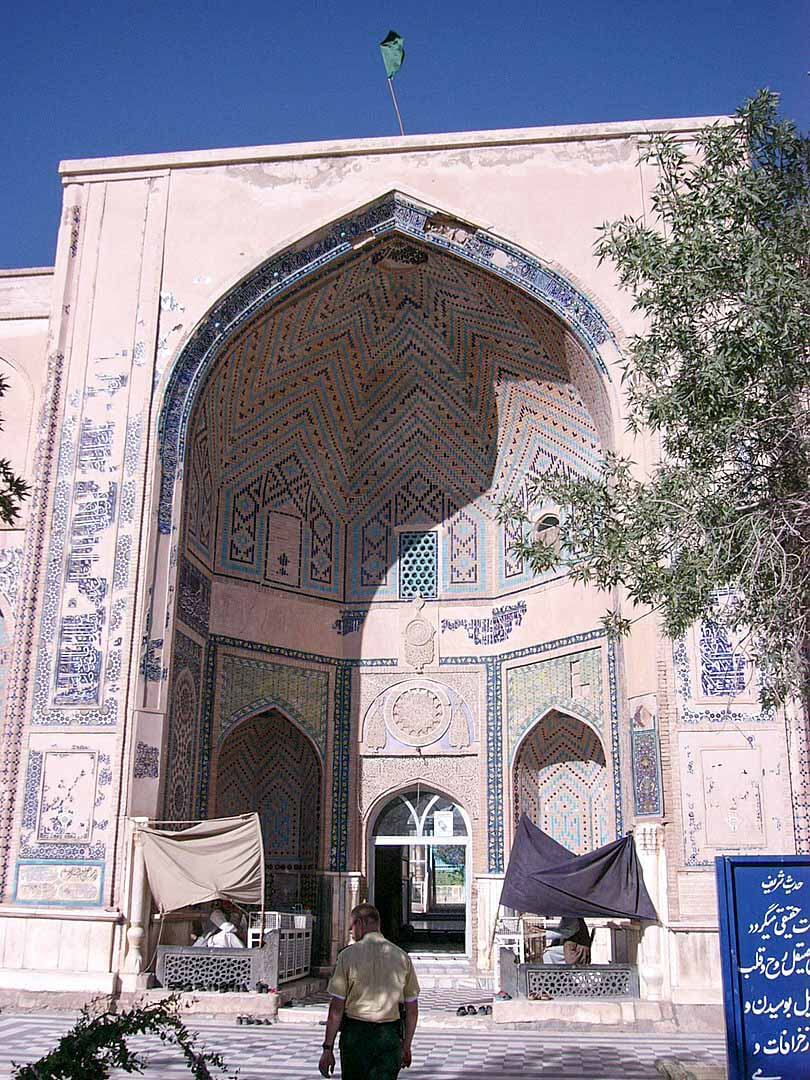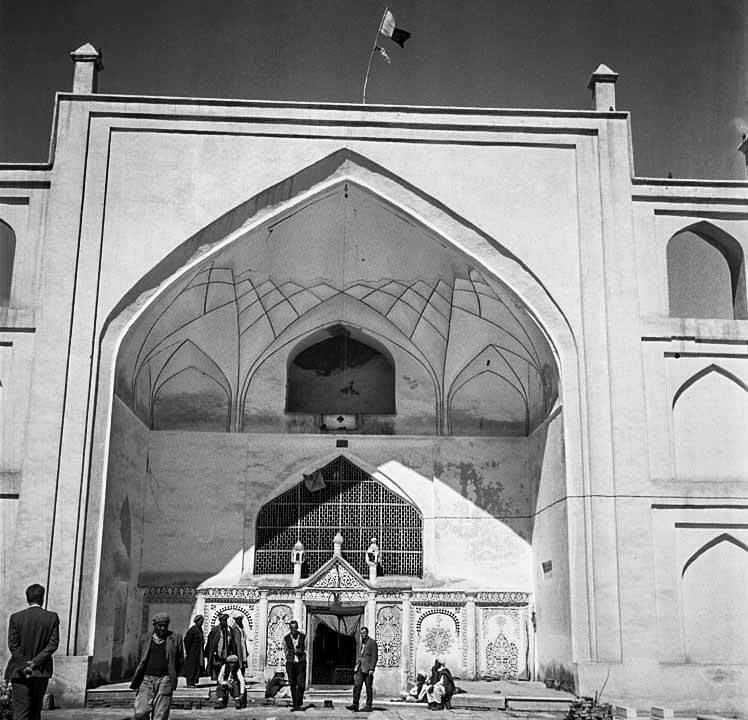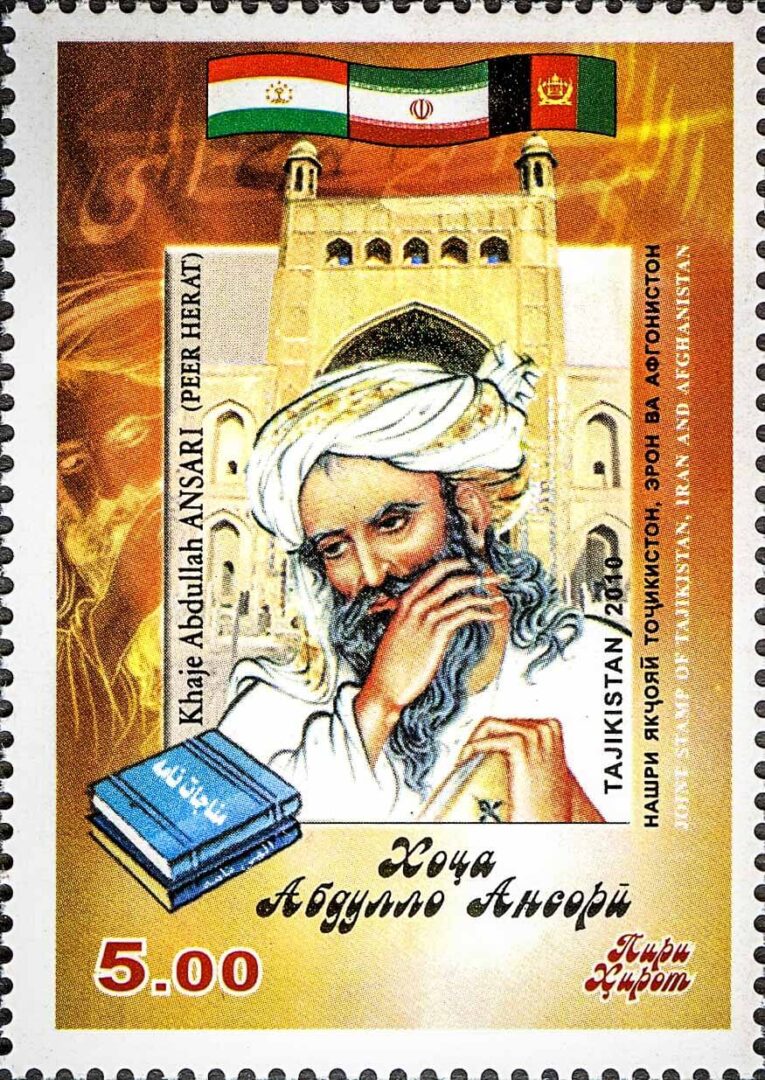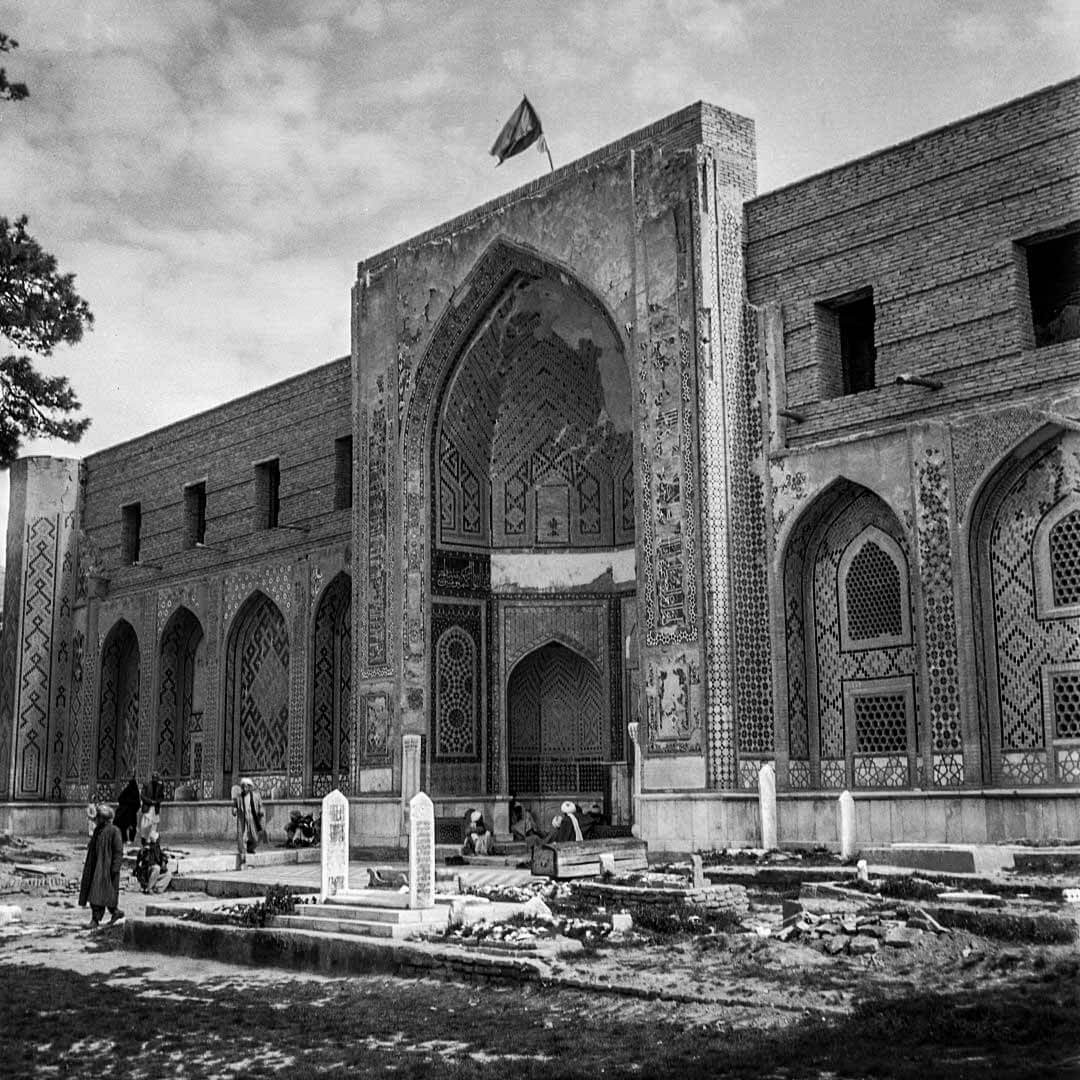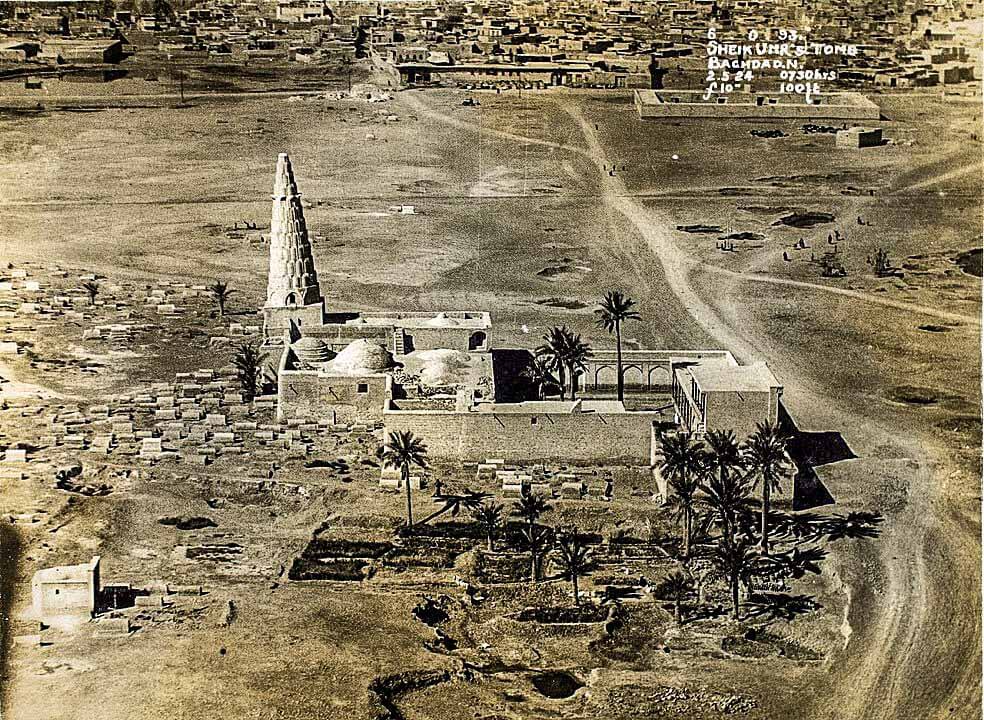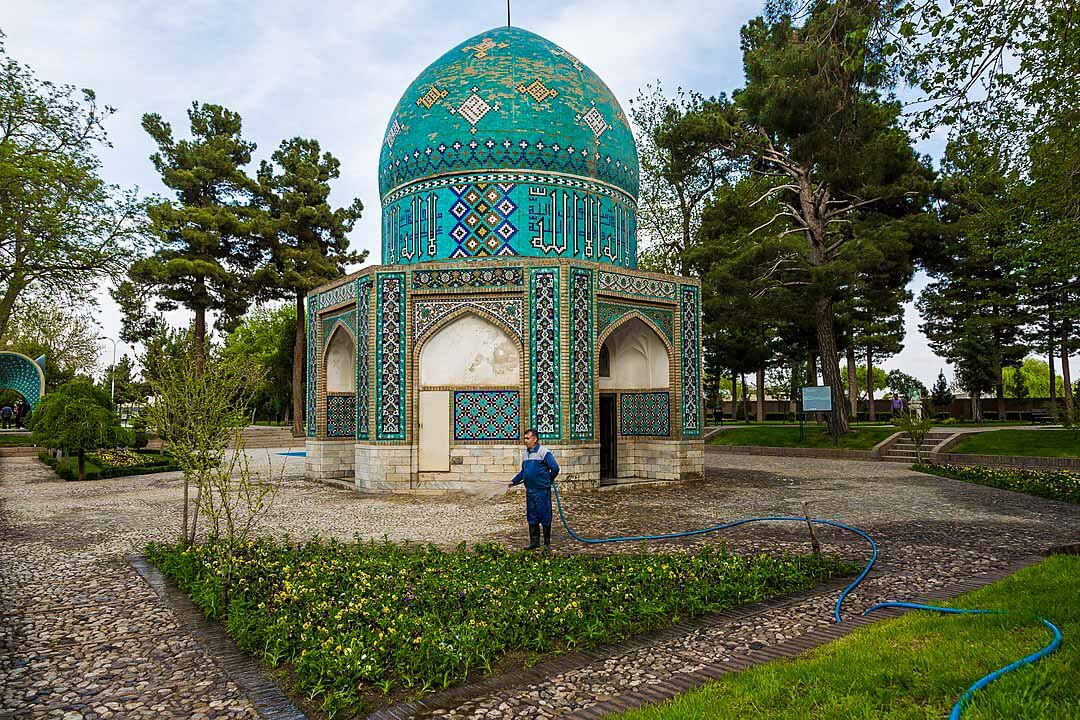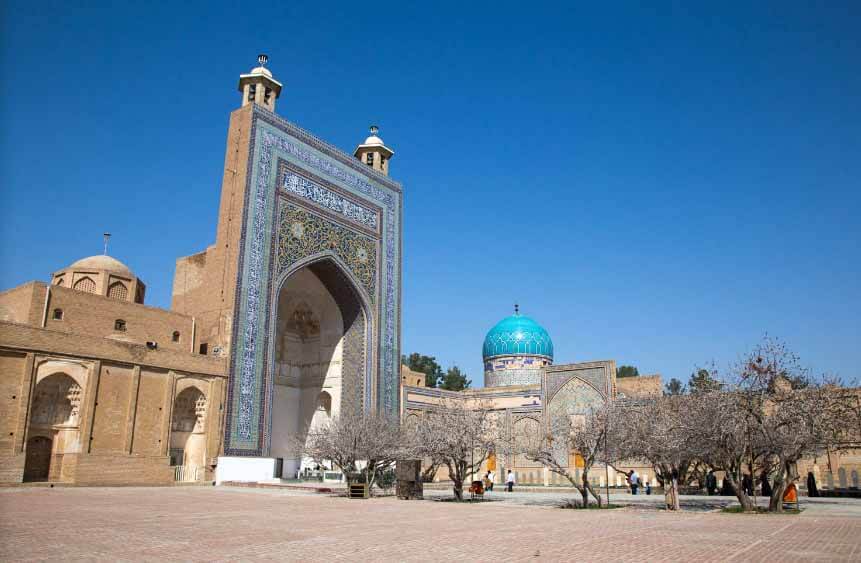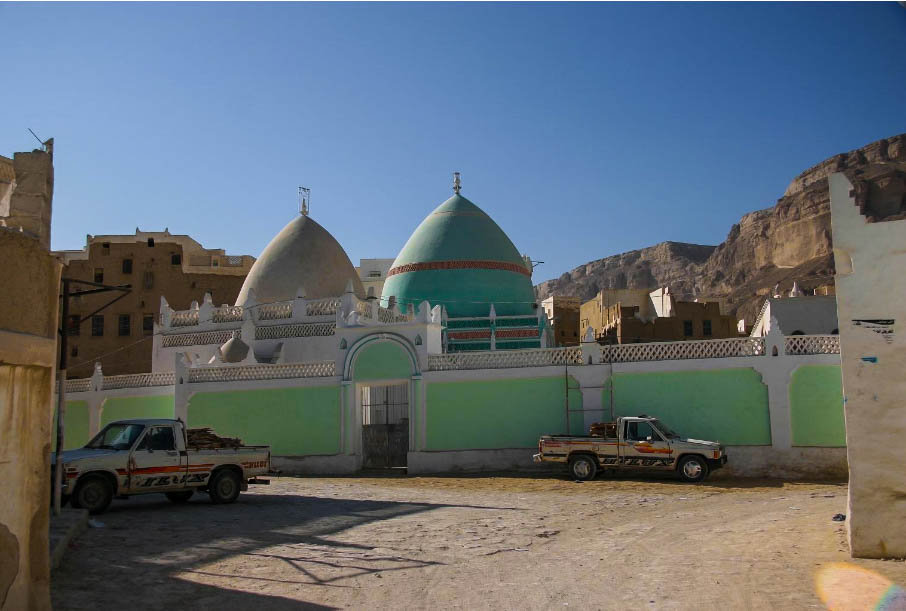Herat, Afghanistan
Coordinates: 34.374472, 62.240472
Hz. Khwaja Abdullah Ansari رحمة الله عليه of Herat (1006–1088) also known as Pir-i Herat “Sage of Herat”, was a Muslim Sufi saint who lived in the 11th century in Herat.
One of the outstanding figures of 5th/11th century Khorasan, he was a commentator of the Qur’an, traditionist, polemicist, and spiritual master, known for his oratory and poetic talents in Arabic and Persian.
Life and Works
He was born in the Kohandez, the old citadel of Herat, on 4 May 1006. His father Abu Mansur, was a shopkeeper who had spent several years of his youth at Balkh.
Abdullah was a disciple of Hz. Abu al-Hassan al-Kharaqani رحمة الله عليه
He practiced the Hanbali school of Sunni jurisprudence. The Shrine of Khwaja Abd Allah, built during the Timurid dynasty, is a popular pilgrimage site.
He excelled in the knowledge of Hadith, history, and ilm al-ansab. He wrote several books on Islamic mysticism and philosophy in Persian and Arabic.
His most famous work is “Munajat Namah” (literally ‘Litanies or dialogues with God’), which is considered a masterpiece of Persian literature.
After his death, many of his sayings recorded in his written works transmitted by his students were included in the Tafsir of Maybudi, “Kashf al-Asrar” (The Unveiling of Secrets).
This is among the earliest complete Sufi Tafsirs (exegesis) of the Quran and has been published several times in 10 volumes.
His traits
He used to avoid the company of the rich, powerful and the influential. His yearly majlis-e wa’az was attended by people from far and wide. Whatever his disciples and followers used to present to him was handed over to the poor and the needy. He is said to have had a very impressive personality, and used to dress gracefully.
Hz. Khwaja Abdullah Ansari رحمة الله عليه of Herat was a direct descendant of Hz. Abu Ayyub al-Ansari رضي الله عنه, a companion of the Prophet Muhammad ﷺ, being the ninth in line from him.
The Hanbali jurist ibn Qayyim al-Jawziyya wrote a lengthy commentary on a treatise written by Ansari entitled Madarij al-Salikin.[11] He expressed his love and appreciation for Ansari in this commentary with his statement, “Certainly I love the Sheikh, but I love the truth more!.
Ibn Qayyim al-Jawziyya refers to Ansari with the honorific title “Sheikh al-Islam” in his work Al-Wabil al-Sayyib min al-Kalim al-Tayyab.
Shrine of Hz. Khwaja Abdullah Ansari رحمة الله عليه
The Shrine of Hz. Khwaja Abdullah Ansari رحمة الله عليه, commonly called the Shrine at Gazur Gah (or just Gazur Gah) and the Abdullah Ansari Shrine Complex, is the funerary compound of the Sufi saint Hz. Khwaja Abdullah Ansari رحمة الله عليه.
It is located at the village of Gazur Gah, three kilometers northeast of Herat, Afghanistan.
The Historic Cities Programme of the Aga Khan Trust for Culture has initiated repairs on the complex since 2005.
The shrine was erected by architect Qavam al-Din of Shiraz in 1425, in Herat, Afghanistan.
This Shrine is known for beginning of Sufism in Herat. There are many followers that come here and chant in unison it is a must see.
The shrine is a little further from the city compared to everything else but still not to far. About 20 minute drive from the center of the city.
Since it is a shrine one must dress modest. For men pants and a shirt is fine.
Shoes you take off at the door while you go inside. Shoes are guarded for a price of 20 Afg less than $1. Women must wear head scarf and abaya. The shrine is surrounded by many other tombstones.
People go and pray and return. You are allowed to take pictures. The place has so much history and many parts have been restored.


